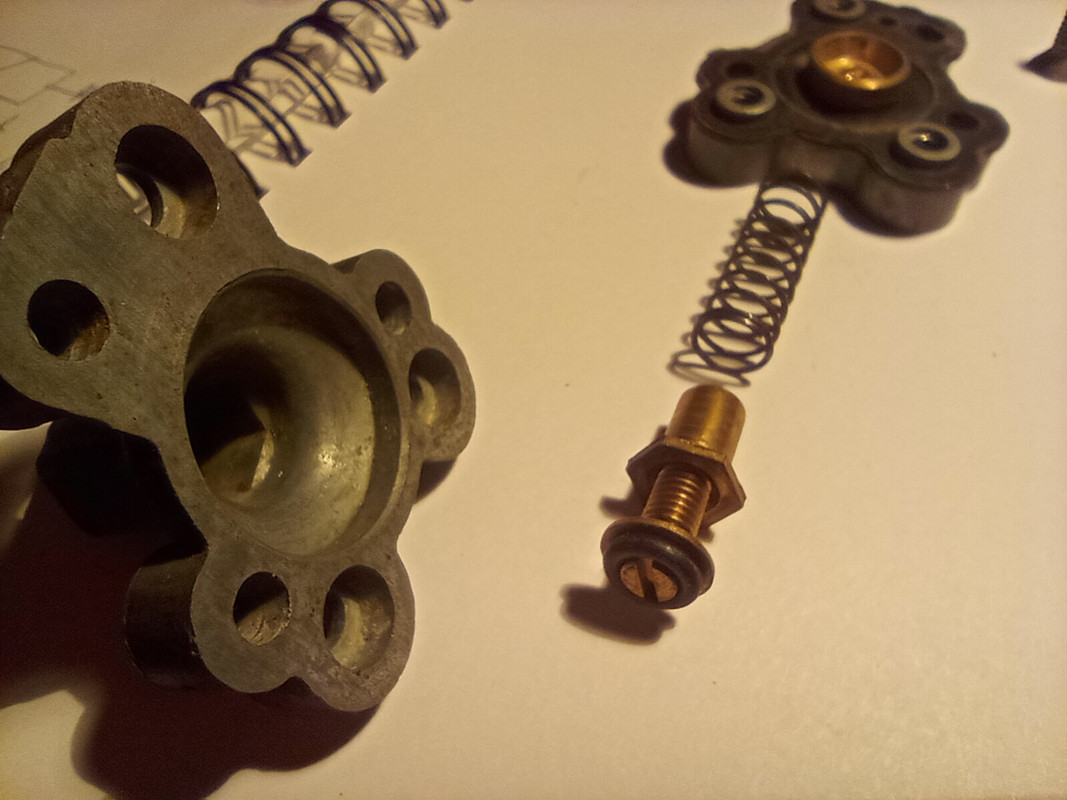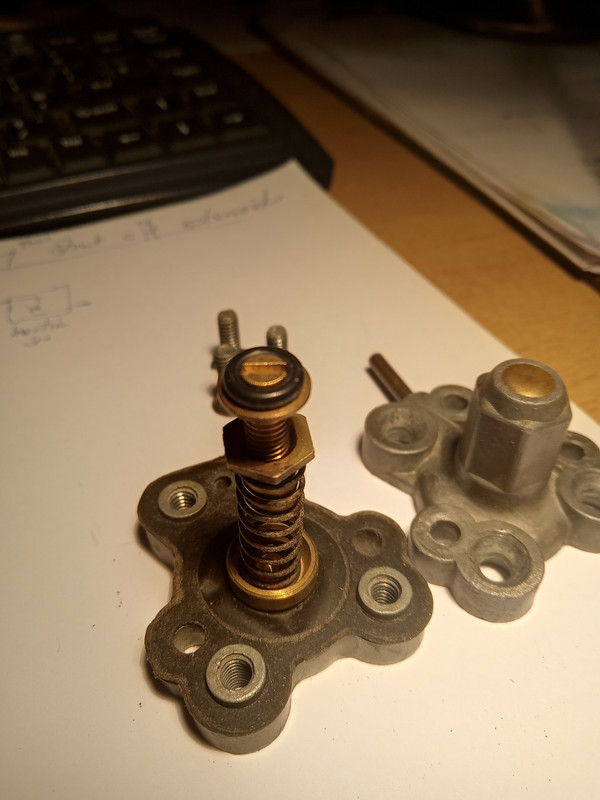They all can be adjusted, ref link in post #3. If diaphragms or vacuum hoses are damaged the bicycle pump idea would likewise not work, until you fixed this.
There are 2 types of bypass valve. On earlier Strombergs there was external adjustment and internal vacuum source, locally in the carb. The concept of adjusting the valves to reduce backfiring is applicable to this type. On V12 e-types it is completely different, I'm not sure we can presume they have the same function/purpose?
For our cars there was external vacuum source and access to the adjustment screw was blanked off. Here are pics of dismantled bypass valve showing the protected adjustment screw. Knocking the little brass plug out of the front cover (spring housing) would give access to the screw making it externally adjustable, there is even an o-ring on the screw for sealing... However all credible, authoritative advice is to not attempt to adjust these.


Mixture control when starting, I was thinking about how the thermostatic valve (C37430) is used to inhibit operation of the bypass valves. When the engine is below temperature the bypass valves are allowed to be sucked open by high intake manifold pressure. When the engine has warmed up the thermostatic valve vents the vacuum lines, therefore the bypass valves (should) never open?
Or so the theory goes. In my case I couldn’t stop just one of the valves opening when idling, even with the springs compressed as much as possible. (Yep, dismantle, adjust the screws, reassemble, test, repeat ...). So balancing the carbs was impossible. So I blanked them off. This enabled me to balance the carbs really nicely and have a low, smooth idle. Downside was, fuel economy was worse. So, having tried it, my advice is now to persevere with the bypass valves if you can.
Suggestions by others on how to adjust them:
https://www.triumphexp.com/forum/spitfi ... t.1688038/
How I would now try to do it:
Start with the screws all tightened the same, as far as possible which is one thread before the nut is out of the hex housing.
Note which carb bypass valve is open at idle.
Loosen the others a turn, recheck.
Repeat until they all don't open at idle.







